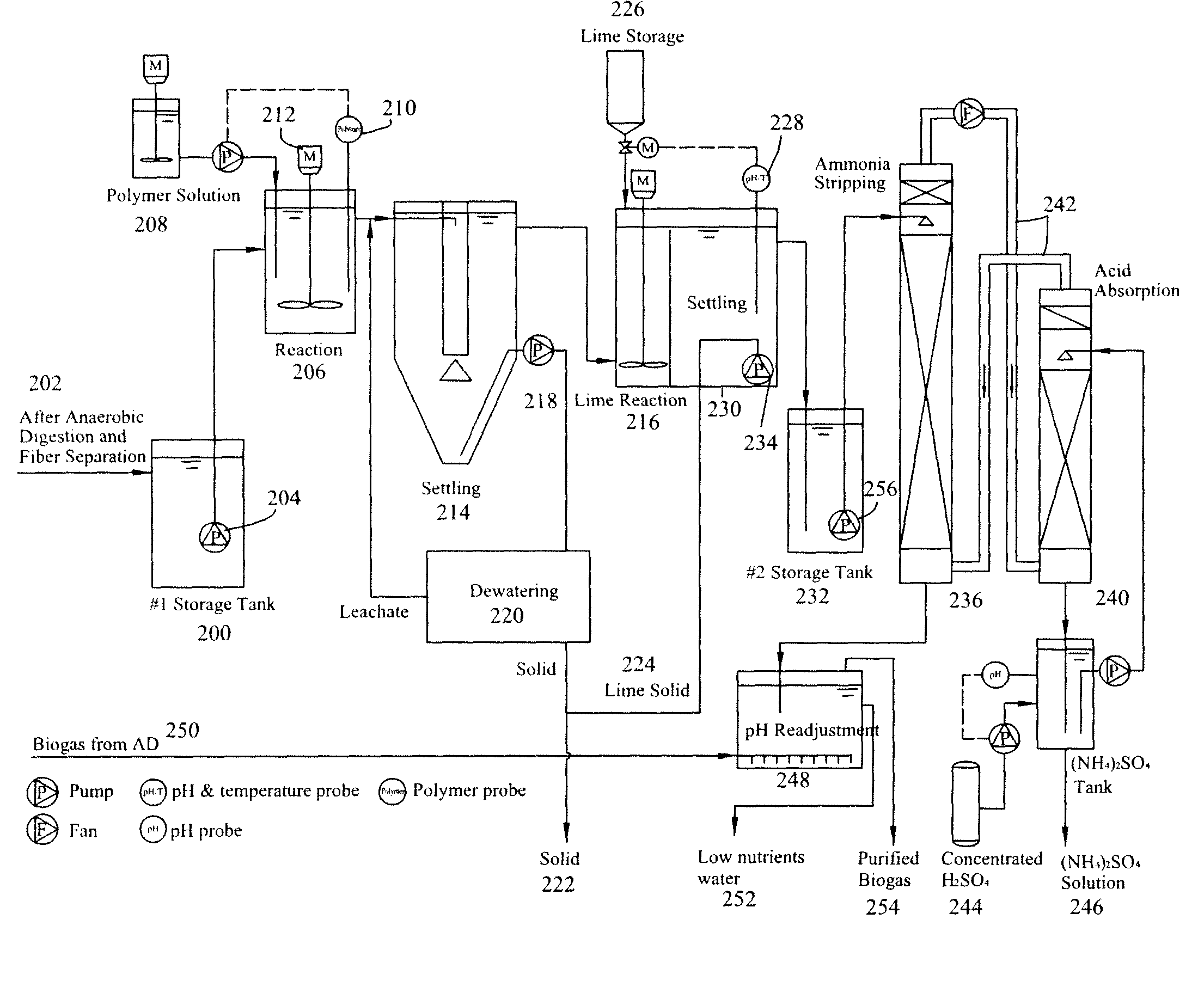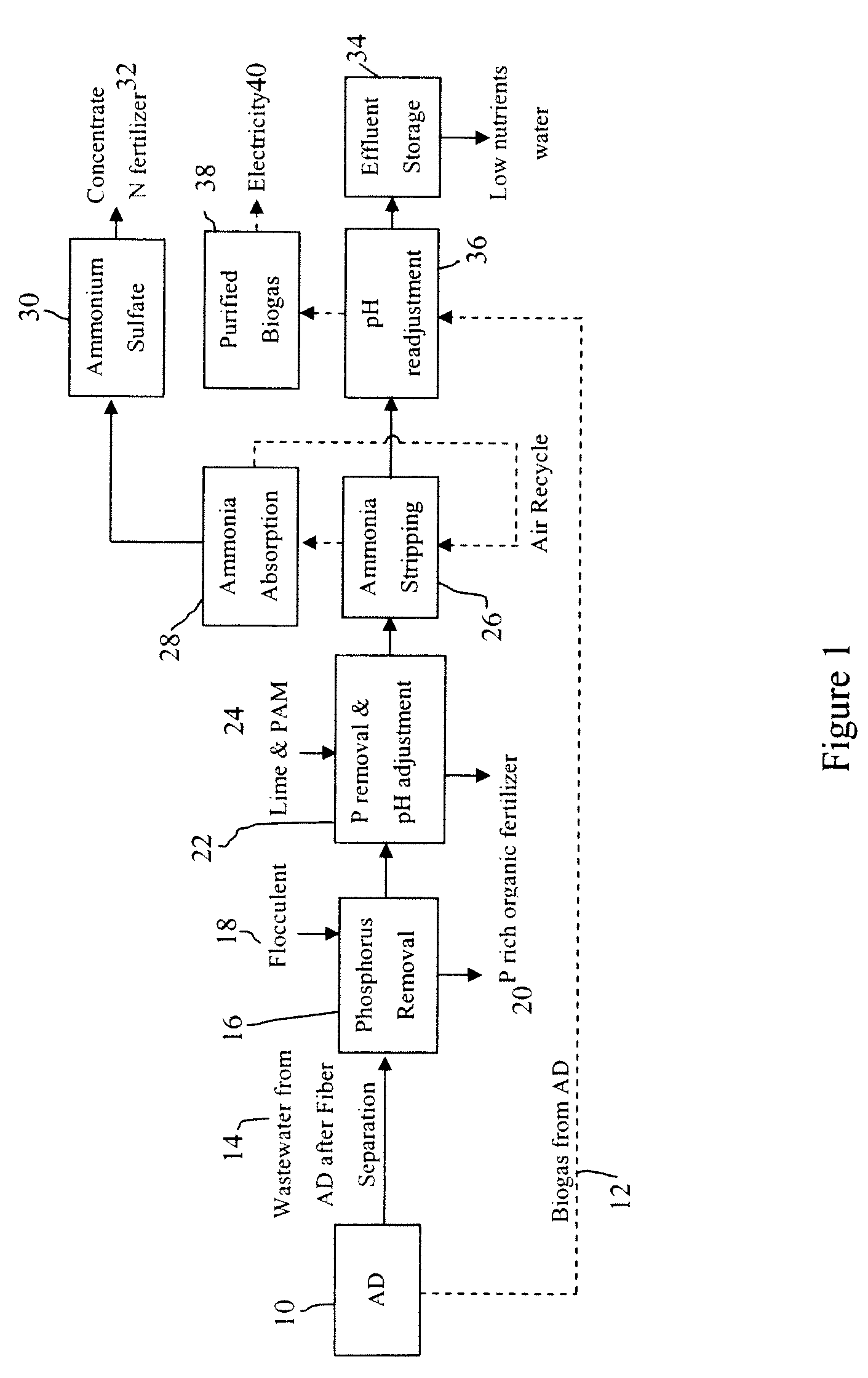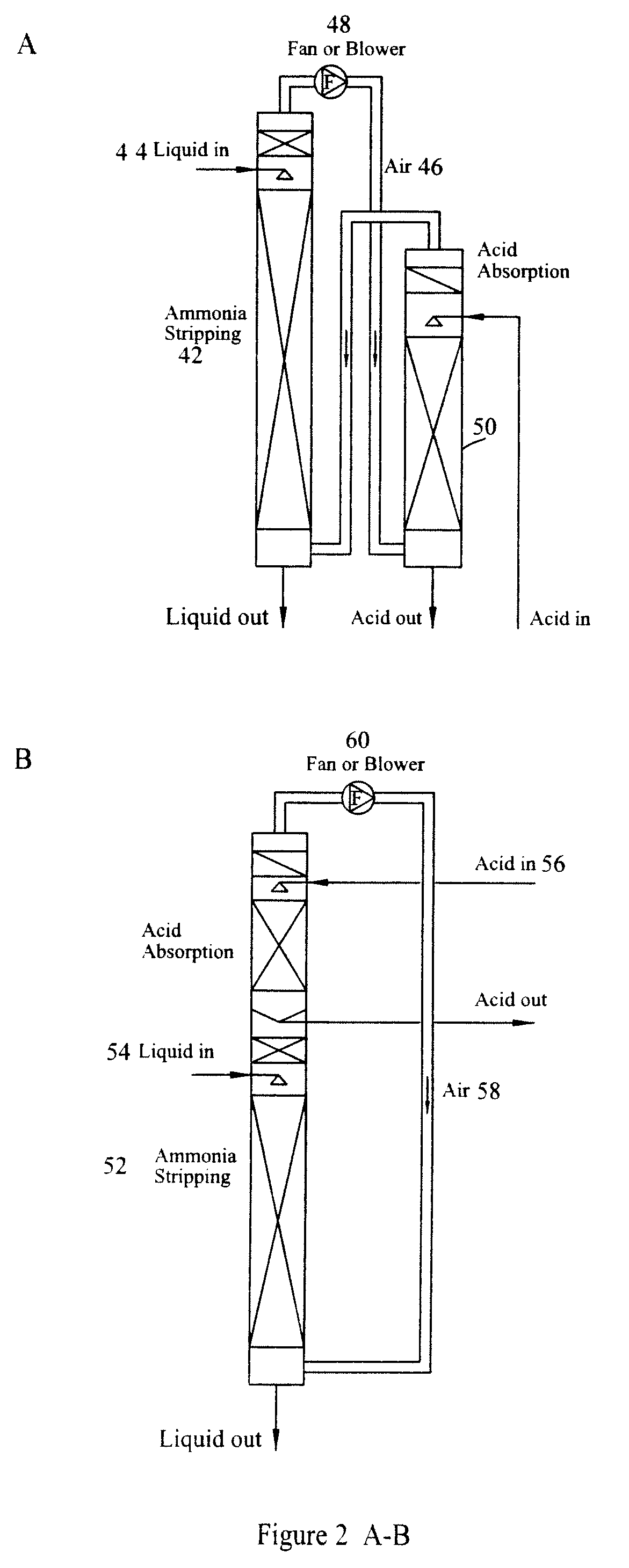Combined nutrient recovery and biogas scrubbing system integrated in series with animal manure anaerobic digester
a biogas scrubbing and nutrient recovery technology, applied in the field of recovery of nutrients during, can solve the problems of affecting the recovery of nutrients,
- Summary
- Abstract
- Description
- Claims
- Application Information
AI Technical Summary
Benefits of technology
Problems solved by technology
Method used
Image
Examples
example 1
Exemplary Waste Treatment System
[0056]An exemplary waste treatment system is used to treat liquid animal waste (AD effluent after fiber separation) from 500 cows. A schematic representation of the system is presented in FIG. 5. The process carried out by the system includes flocculation for phosphorus removal, lime dosing for pH increase, ammonia stripping, acid absorption, biogas purification, and solid dewatering. The flow rate is 80 m3 / d (21,000 gallons / d), reference to a commercial dairy farm.
[0057]With reference to FIG. 5, the #1 storage tank 200 temporarily stores the AD effluent 202 and also acts as a flow equalizer. The hydraulic retention time (HRT) is two hours. The volume of this tank is 8 m3 (2,100 gallons), which includes 1.3 m3 (340 gallons) of headspace. An immersion pump 204 is installed to pump the liquid to the polymer reaction basin 206.
[0058]The polymer reaction time is 30 minutes. The reaction chamber 206 is 2.2 m3 (580 gallons), which includes 0.5 m...
PUM
| Property | Measurement | Unit |
|---|---|---|
| temperature | aaaaa | aaaaa |
| pH | aaaaa | aaaaa |
| temperature | aaaaa | aaaaa |
Abstract
Description
Claims
Application Information
 Login to View More
Login to View More - R&D
- Intellectual Property
- Life Sciences
- Materials
- Tech Scout
- Unparalleled Data Quality
- Higher Quality Content
- 60% Fewer Hallucinations
Browse by: Latest US Patents, China's latest patents, Technical Efficacy Thesaurus, Application Domain, Technology Topic, Popular Technical Reports.
© 2025 PatSnap. All rights reserved.Legal|Privacy policy|Modern Slavery Act Transparency Statement|Sitemap|About US| Contact US: help@patsnap.com



